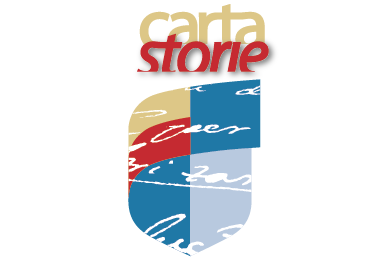THE PLAGUE OF 1656
No event changed the reality and the history of Naples quite like the horrible epidemic of 1656. The entire life of the city, in its everyday economic and sociological affairs, was trampled by the violence of a disease which appeared at the time to be a divine curse announcing the end of the world. The black wave overwhelmed the population of the city at the peak of its expansion and fame, lives were lost and the worries and preoccupations of the people were overcome with the well-known and lesser-known incidents of Neapolitan life during that terrible year of 1656.
The daily copybooks of the eight ancient Neapolitan banks give us precious details about that terrible time. Everything began in the first warm days of Spring which soon became sweltering. The first deaths triggered a delayed reaction by the anxiety-ridden authorities…
June 7, 15.20 ducats for the price of metal instruments delivered to the San Gennaro leper hospital for the surgeons and barbers.
June 8, 110 ducats to Agostino Baratto, Surgeon, who entered the San Gennaro Leper Hospital to treat the diseased patients.
Doctors and barbers were sent to the leper hospitals which were set up in the Basilica of San Gennaro outside the walls near the island of Chiuppino, which has since disappeared, near the island of Nisida. The economic transactions of that time remind us of the macabre lines and shadows in the paintings by Micco Spadaro. Military patrols quarantined the capital city and marched through the streets, frantically trying to remove the bodies of those who had died from the disease far from their own homes.
June 16, 20 ducats to eight soldiers who must patrol the streets from Porta Capuana to Porta Nolana, removing the cadavers and taking them to the established places without leaving any of them behind in the streets.
July 3, 100 ducats for the publication of 150 public notices announcing the prohibition of taking or sending merchandise outside Naples, 100 public notices prohibiting the sale of water in Naples, 150 public notices prohibiting ill people from exiting their homes, and 3000 votive candles to the Santissima Concezione di Maria Santissima Vergine
The employees of the banks, who came into direct contact with the public, and therefore were certainly exposed to contagion, were annihilated by the black plague. And yet the bank activities, and the details of those transactions now held in the historical archives, continued. They note, with fevered insistence, day after day, the acquisitions and other transactions that still took place in the devastated city.
July 24, 13.30 ducats paid to the gravediggers to bury the cadaver of what was once Andrea Cannavale, who died in the time of the Plague inside our Bank.
Finally, when the heat abated and the sweltering summer began to end, the disease slowly released the alleyways and the piazzas from its clutches, leaving behind the broken bodies and lives of nearly two hundred thousand Neapolitans. When the mortal wave receded, the survivors, shocked by the horror that had brushed so close to them, began to make generous offerings. The celebrated painter Mattia Preti was asked to honour the Mother of God, Saviour of Naples, by producing frescoes above all of the gates of the city with devotional images.
November 27, 200 ducats to Mattia Preti who, in honour of the Queen of Heaven, is asked to paint the image of her Purification and Immaculate Conception above the gates to this city.
